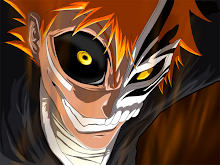NOW imagine taking that ultra-modern looking space shuttle - but re-making the picture so it looks as though it was taken with a camera around the turn of the century. Gone is the color. It's a little blurry and there's that delicious sepia tone.
Taking a picture and turning it into an imaginative older-looking graphic is life's second best sensation. Here's one of many methods for getting it done.
Start FIRST by deciding where you are going to display your final picture. Is this a graphic going to be used primarily on-line and in PowerPoint presentations or do you intend to print that it? If you're planning to print just proceed to Step Two below.
If you're planning to display your work on-line, in email or on a PowerPoint, do yourself a HUGE favor and go to Image> Image Size and reduce the Resolution to 72. Why? This will allow you to work much more quickly inside Photoshop since the file size is significantly smaller. It will also take up much less room on your drive.
Step Two: Copy your picture to a new Layer. (Layer> Duplicate Layer) You do this so that if you make a mess you haven't destroyed your original. (As we all know, if you wreck your original picture, the entire North American continent will slide into the sea and life as we know it will cease.)
Step Three is called "Deciding How Old You Want The Picture To Be" (DHOYWTPTB for short). Are we creating a simple black and white? If you're one of the lucky eight million or so who are using Photoshop CS3, it's very simple: Image> Adjustments> Black and White. This brings up a wonderful Black and White option set where you can make very fine adjustments to the picture. Push the sliders around. You'll see.
If you're NOT working with Photoshop CS3 - which boasts the very best B&W conversion ever - you will want to work with the Desaturation setting. A great rule of thumb is to use the Desaturation in concert with punchier Contrast.
If you want the picture to be even older looking maybe with an antique sepia tone, try Image> Adjustments> Photo Filter. Here's an excellent set of options for all sorts of different effects. Sepia works but so do many of the other photo filters in this menu.
It's useful to remember that with Photoshop you can SELECT PORTIONS of your photograph to work with and modify using any of the Selection Tools. This is useful if you want to age or blur various parts of the photo without making changes to the rest of the image.
Always do your Weird Experimental Stuff on a new layer and remember that the UNDO command rivals sliced bread and the wheel as the most useful invention of all time.
Old pictures are blurred. In very old pictures, the outer portions of the graphic are blurred, but the center of the photo is sharper. Use your Elliptical Marquee Tool (found in the selection portion of your toolbox) to define a large portion in the center of your graphic.
When you activate the Elliptical Marquee Tool you'll see a box on the upper toolbar marked "FEATHER." This allows you to decide how gradually the filter, which you are going to use next, is applied. I suggest that you set the FEATHER value to about 75 so that the effect of the blur below will be more gradual.
Go to Select> Inverse so that the blur you are about to apply will be applied on the fringe of the photo and not your subject. ("Inverse" is Adobe's way of saying "Everything Else That I Have Not Selected.")
Now have some fun: go to Filter> Blur> Gaussian Blur. You'll see a slider control appear. As you move the slider, you'll see the blur increase. Remember that what you are trying to do is create the effect of an old camera. Keep your hand on the slider very gentle. The idea here isn't to show off. The idea is to create an illusion of an old photograph. Gentle, gentle now...
Create another new layer (Layer> Duplicate Layer for those who weren't paying attention before) and DESELECT (Select> Deselect).
Now go back and apply a VERY LIGHT Gaussian Blur to the whole picture.
You may want to work some more of the Photo Filters to get that beautifully aged look you're after.
By now, depending on how experimentally minded you are, you should have a number of layers. Remember that you can do two very cool things with these layers before you FLATTEN the image. You can change their order around by clicking and dragging them up and down. (The top layer will always be the first layer of the graphic.)
The other great tool at your disposal the Opacity box which has been saddled with a typically silly Adobe name but does some very cool stuff. You'll find this box at the top of your Layers menu. Use this to change the TRANSPARENCY of each individual layer. Think of this in terms of laying one photograph on top of another but deciding in advance how transparent you want each one to be.
Opacity makes it possible for you to "bleed" the effects you've applied on each layer through the whole picture.
When you're done Flatten the image (Layer> Flatten Image) and "Save As" JPEG.
Try to resist the urge to let fly with a resounding "Tuh DUM!" when you see the final picture. Especially if you're not alone. Many people fail to understand the joy you can get from some of that graphic voodoo stuff you do.
Source : http://www.helium.com/items/904501-how-to-make-a-photo-look-old-in-photoshop?page=2
Get this widget [ Here ]


No comments:
Post a Comment